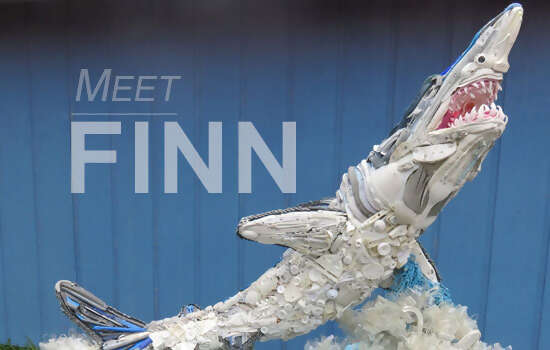A LOAD OF RUBBISH
Posted on 06/21/2016 | About Уса, Russia

Oh, the irony of it all. Tourists scavenging the beaches, looking for treasures from the sea, just as garbage and waste is being dumped into the oceans and washed up on the shores. If you are wondering who is going to take the garbage out, that’ll be Angela. American artist Angela Haseltine Pozzi picks up plastic debris from the beaches and uses them to create beautiful sculptures of marine life.
flip flops, disposable lighters, goose decoys, children’s toys, chairs, dog leashes
It is estimated that 300 billion pounds of trash blemish our seas and much of it is washed up on shores, although the pieces that don’t reach land are more worrisome.
Plastic bags are mistaken for jellyfish and consumed by sea turtles and Tufted puffins fill their bellies with plastic water bottles, eventually dying of starvation. Not all seals perish after entanglement in fishing lines; mostly the juveniles and sub adults.
buoys, rice paddles, tooth brushes, plastic lattice, wheels, shovels, toilet seats
Haseltine Pozzi grew up on the Puget Sound, where she was alarmed by the volume of garbage on the beach and became aware of marine species becoming endangered because of the plastic pollution in our oceans.
She started, “using what the ocean is throwing back at us to create an artistic response.”
Her response was Washed Ashore, where she, and a team of volunteers collect debris from the beaches; wash them (in rain water) dry them (in the sun) and use them to create sculptures of marine life in danger of extinction.
gun shells, netting, detergent bottles, shoes, soles, boots, fake flowers
SeaWorld Orlando enlisted The Washed Ashore Project to create a structure of a Mako shark to be located near their new Mako roller coaster.
Finn is 1.98 meters (6 ½ feet) high and long. He is built on an assembly of non-biodegradable plastics; washed up spoons, a hard hat and a toilet brush.
Inclusion of plastic bowls and cutlery also help to illustrate the dangerous practice of “shark finning” where fins are removed from live sharks to be used for human consumption; an expensive delicacy enjoyed by some cultures.
The sharks once bludgeoned are thrown back in the ocean where they die by suffocation, starvation or are consumed by another fish.
lids, caps, tires, beer coolers, beer cans, sunglasses, fishing poles, fishing lures
Just to emphasize that pollution and finning doesn’t discriminate between mature and juvenile sharks, in his mouth Finn has a dental retainer.
